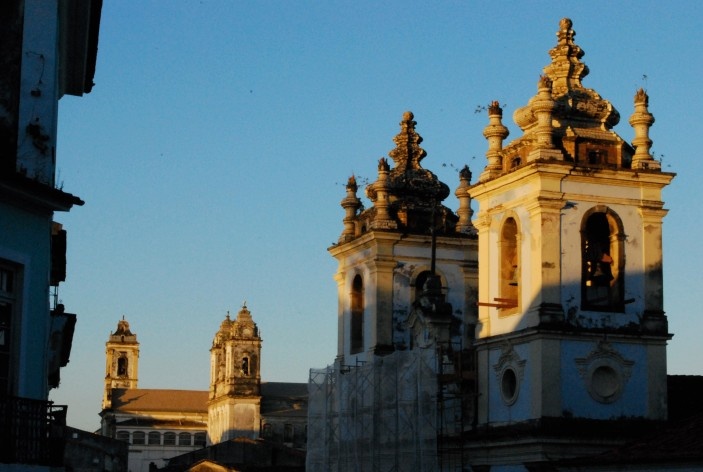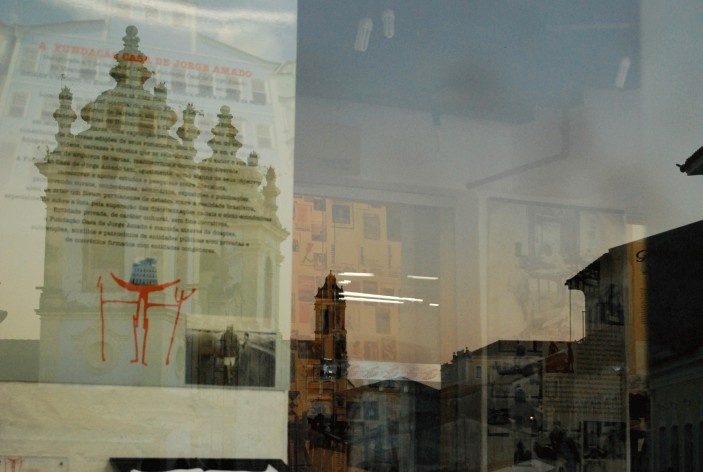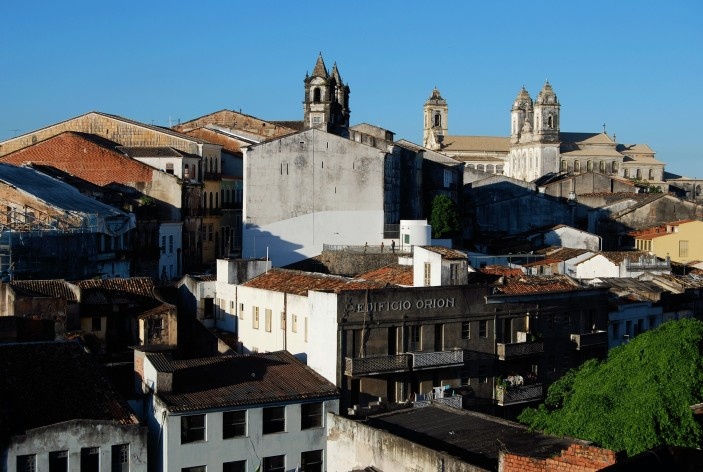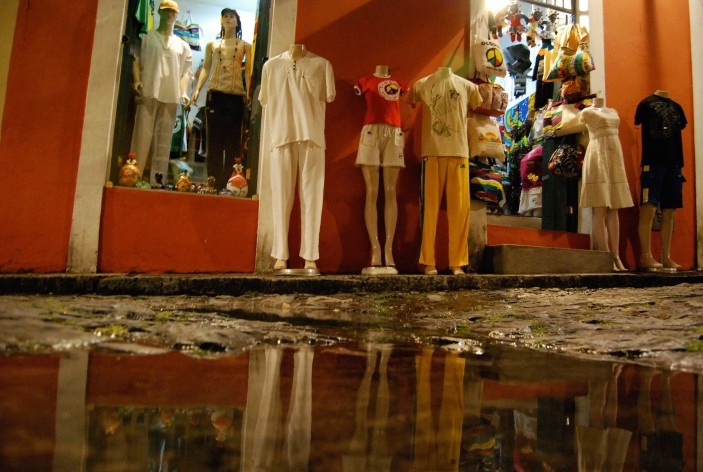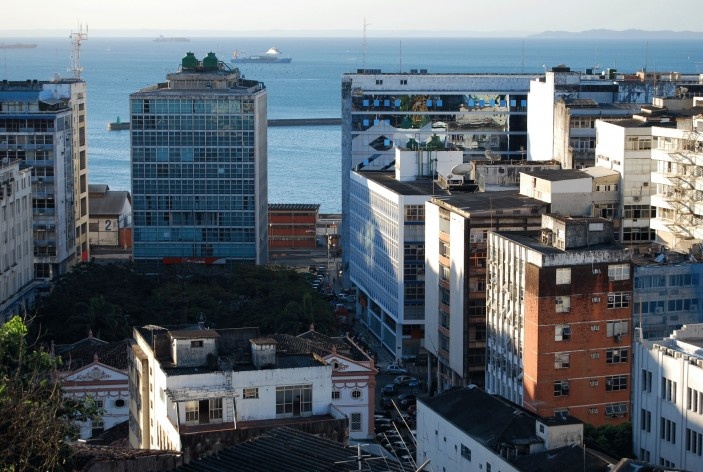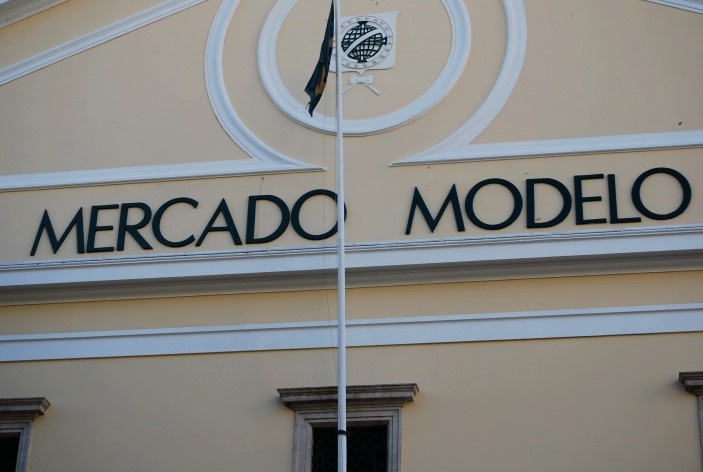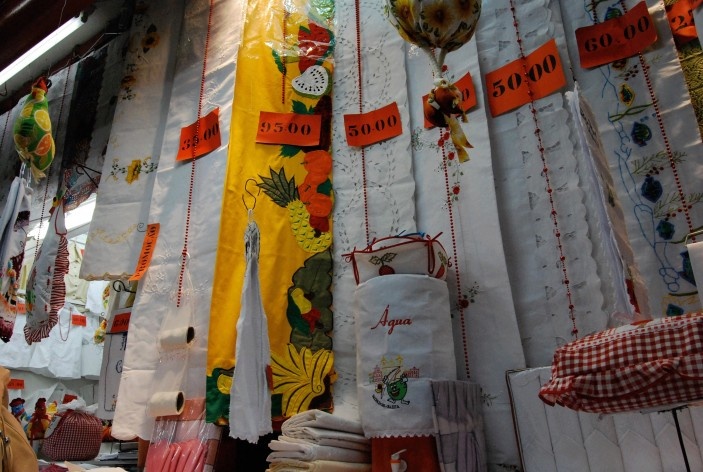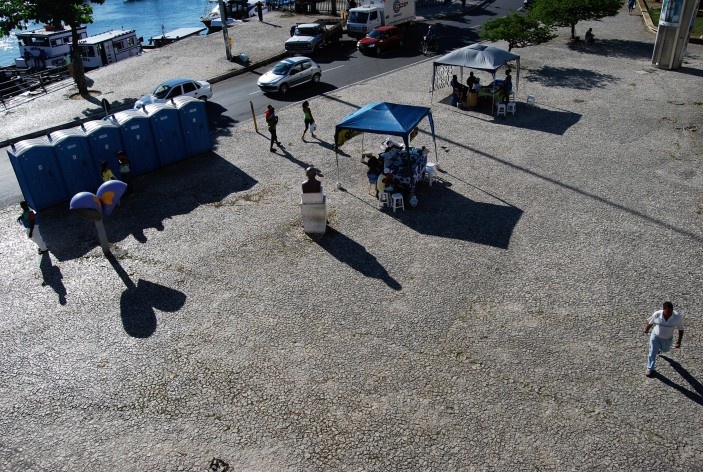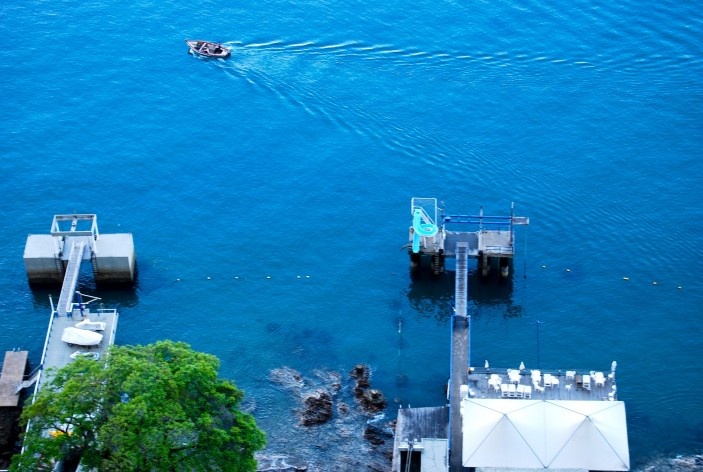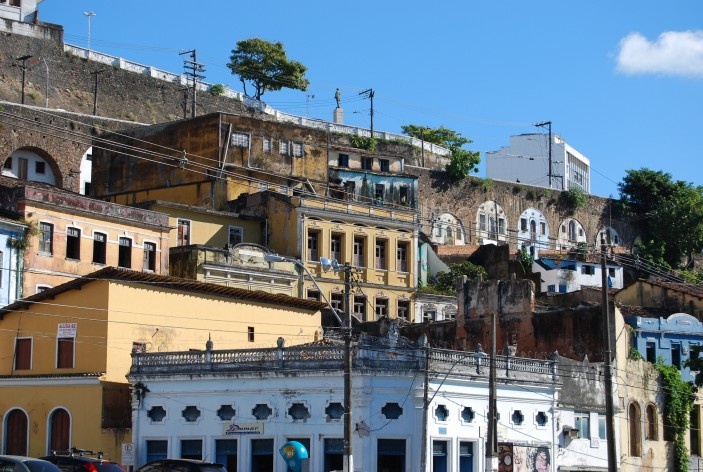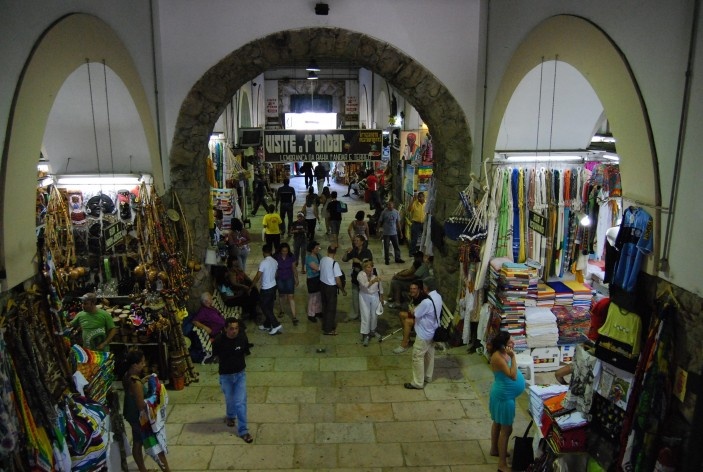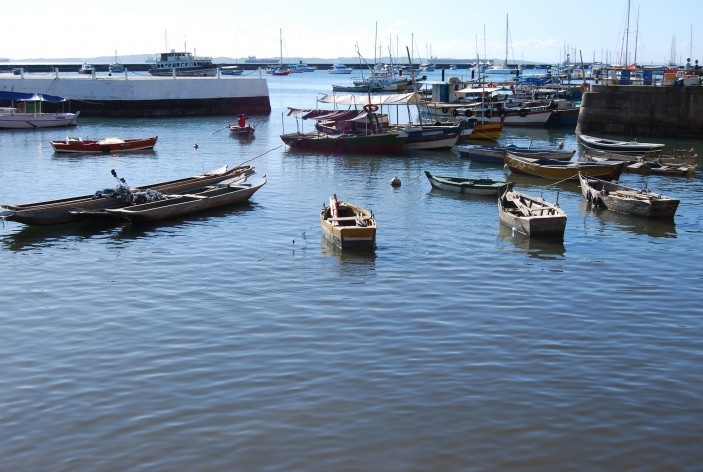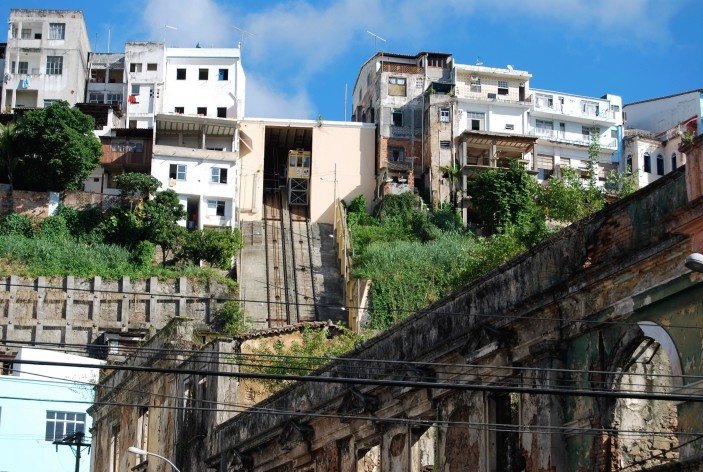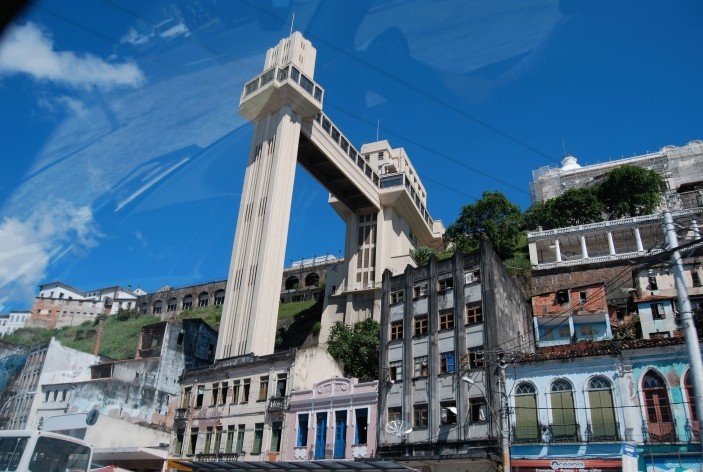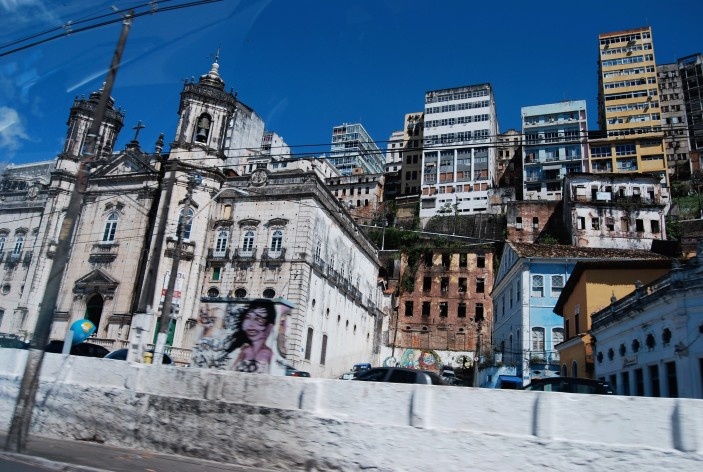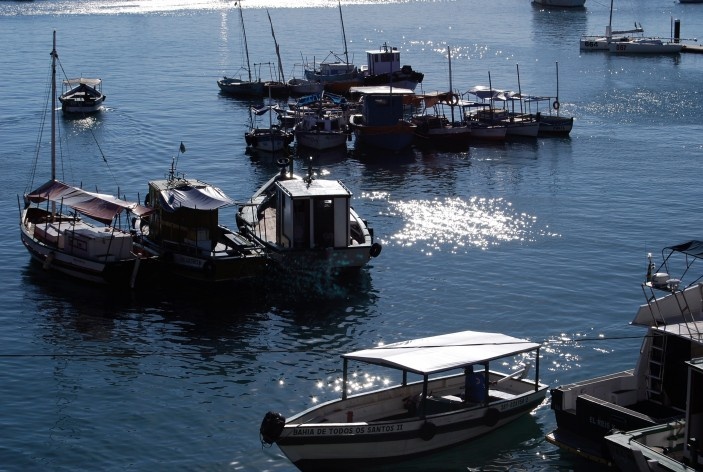The journey to Salvador was prompted by a meeting organized by the PostGraduate Program in Architecture and Urbanism of the Faculty of Architecture of the Federal University of Bahia - PPGAU / UFBA, conjugated with the Institut d’Urbanisme de Paris - IUP. This meeting of researchers occurred in the period of 9 to 13 November 2009, in which the challenges of urban planning in France and Brazil have been intensely debated, with respect to academic formation, research and practices on cities. It was also an opportunity to be with my researchers friends from Urbanismo BR (1).
In the intervals of the scientific meeting escapes to the historical centre remembering the days that when i’ve been there on the postgraduate master in UFBA. Like any metropole in Brazil, Salvador shows the contrasts between the protected circuit for tourism and others ... urban equipments, furniture and lighting, along with textures and colors, besides differentiated paving reinforce these contrasts.
Scenes of urban violence and police repression falls in these contrasts, as Caetano Veloso singer related, "... when you're invited to go up in the Jorge Amado Foundation to see the top row of soldiers, almost all black giving blow on the nape of black rogues, thieves of “mulatos” and other treated as black-white".
Besides these differences, which are real, the City of Salvador expresses its secular and religious syncretism through the cooking, the music, beliefs, customs, among others, inserted in different cultural places, and through the multicultural aspect of their own people.
Photographing Salvador is fascinating, intricate at the historical centre, in the “cidade alta” with narrow streets, squares framed by “sobrados”, “casarões” and churches among others. If we head north we encounter the Fort Santo Antonio Alem do Carmo on the edge of the walled city in the past. Besides the fort, the“Liberdade”’s most negros place in Salvador and elsewhere. To the south, after the “Praça da Sé” and “Praça Tome de Souza”we find the “Praça Castro Alves” with three streets’ options, the first by the modern“Avenida Sete”, the second by the “Carlos Gomes’ street” and the third by “Ladeira da Montanha” street. For this last, we assessed the “cidade baixa” with its peculiarities, as the Mercado Modelo, “Elevador Lacerda” and the “Plano Inclinado”, besides the orthogonality of the stroke, as a landfill created on the sea, in the extension, brings us up to Ribeira, through the “Feira de São Joaquim”.
This essay is dedicated to my friends of Capoeira Angola‘ s GCAP group and to my teachers and friends of MAU FAUFBA and Urbanismobr scientific network. Even away from Salvador, the stage posdoc IUAV with support from CAPES, do not cease to remember Bahia, particularly “soteropolitano” ’s experience "par excellence" in every sense ... Other journeys on the Bahia are necessary ...
notes
1
Rede Urbanismo BR <www.urbanismobr.org>.
about the author
Fabio Jose Martins de Lima was born in Belo Horizonte, Minas Gerais, Brazil, on September 2, 1961 and photographing since 1983. Professor at Federal University of Juiz de Fora, from 1999, graduated in Federal University of Minas Gerais (1989), Master in Architecture and Urbanism at Federal University of Bahia (1994) and PH.D.in Architecture and Urbanism at University of São Paulo (2003). From 2011 is committed to the Università IUAV di Venezia on a Technical Stage, with support from CAPES, Brazil. In Juiz de Fora coordinating research group Urbanismomg at Federal University of Juiz de Fora, with support of CNPq, FAPEMIG and Min Cidades and Culture.




